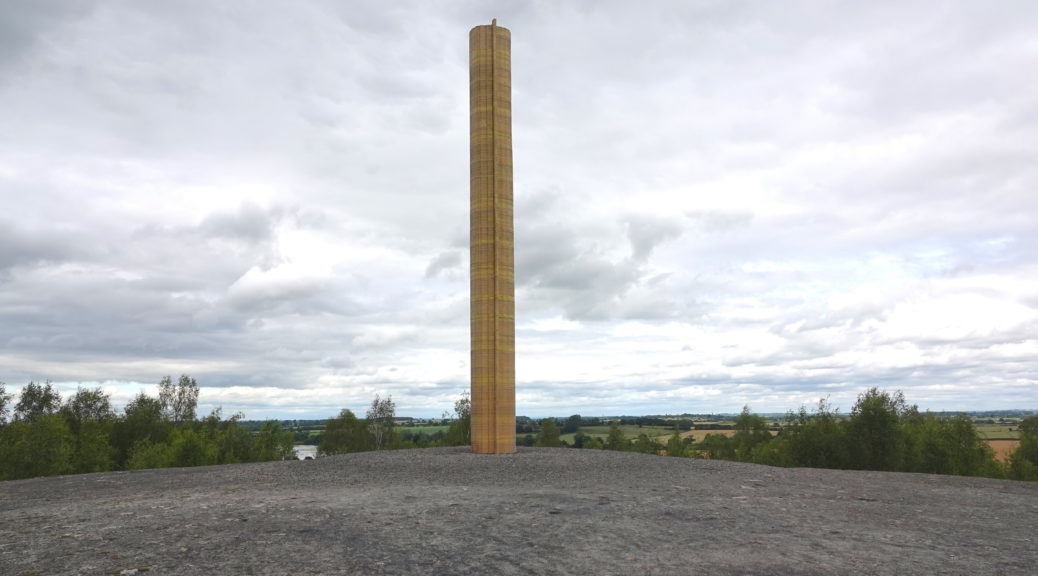
Putting the Pole in Polesworth
Just outside Polesworth there is a monument of fossil fuel.

Poised on top of an old slag heap from the local coal mines there is a golden pillar forty feet tall. The cross section represents a silver birch leaf, but you can’t see that unless you are forty one feet tall, or happen to have a forty foot ladder in your backpack. Stilts might also work, or a really tall unicycle.
Anyway, it represents solar energy stored in fossil fuels, that were dug up to power the industrial revolution and pollute the atmosphere. These days the old mines are having a more positive environmental impact. Subsidence caused by the mine workings has resulted in a number of pools that attract waterfowl and wildlife, the slag heap has been covered by silver birch trees. The whole area is a nature reserve, and nobody can ever build there, as there might be more subsidence.
Most of the world’s coal was created in the Carboniferous Period (duh) which started around 360 million years ago, when plants competing for sunlight started getting taller and taller using newly evolved strong substances called cellulose and lignin. This was great for them, especially as there was nothing in the plant or animal kingdom that was capable of eating cellulose. When a tree died and fell over (not necessarily in that order) it would just lie there until another tree fell on top of it, and another and another, until eventually the compression turned the trees into coal.
Around 300 million years ago a bacteria finally evolved that could make a picnic out of a log, and happily installed in the intestines of termites their descendants are still turning fallen trees into mush the world over. But for 60 million years the land surface of the world was covered in dead trees, food that nobody could eat. It was as bad as being in McDonald’s when they run out of ketchup.
Before we climbed the slag heap, we went to look at Polesworth Abbey.
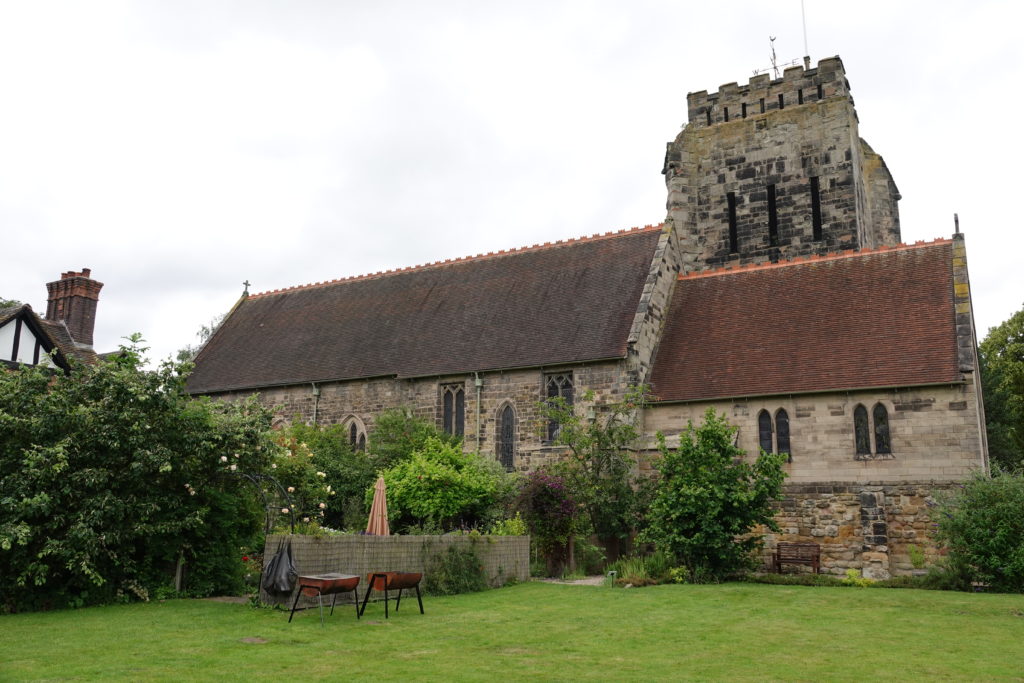
The tower dates back to before the abbey was closed by Henry VIII. The rest of the charming church was mostly rebuilt in Victorian times, though the Norman arches on the left may have survived from the 12th century.

The cafe, vicarage…

… and gatehouse are old, too.
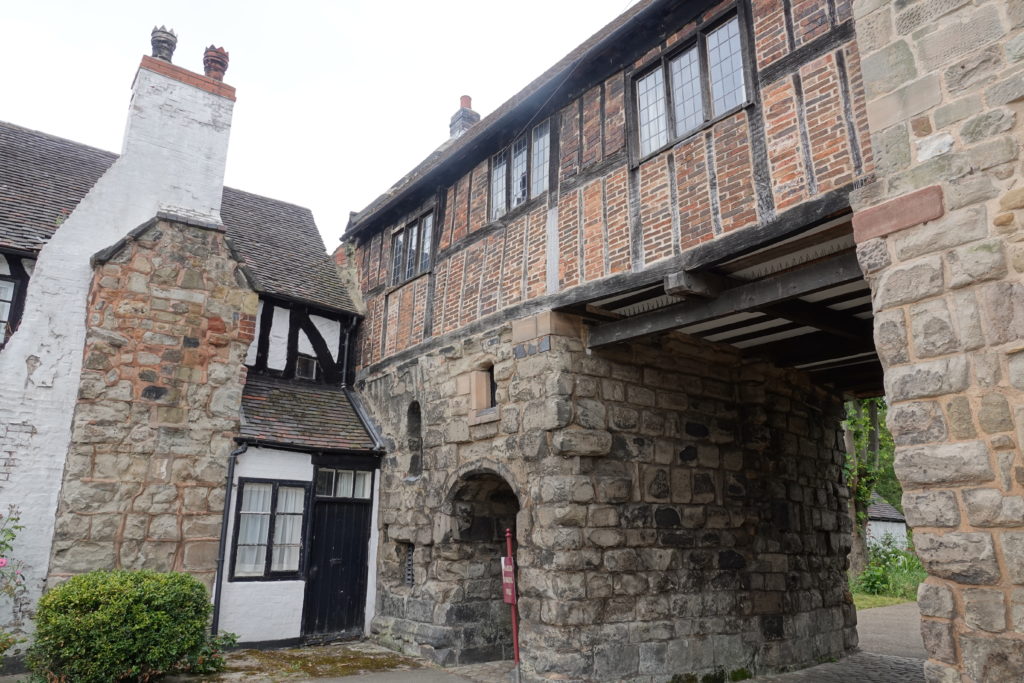
The gatehouse has been converted into flats for holiday rentals, so if you want to stay in a medieval building with a pub on one side of you and a graveyard on the other, here’s the spot.
The church has a eclectic collection of art and monuments. There’s disco Jesus…
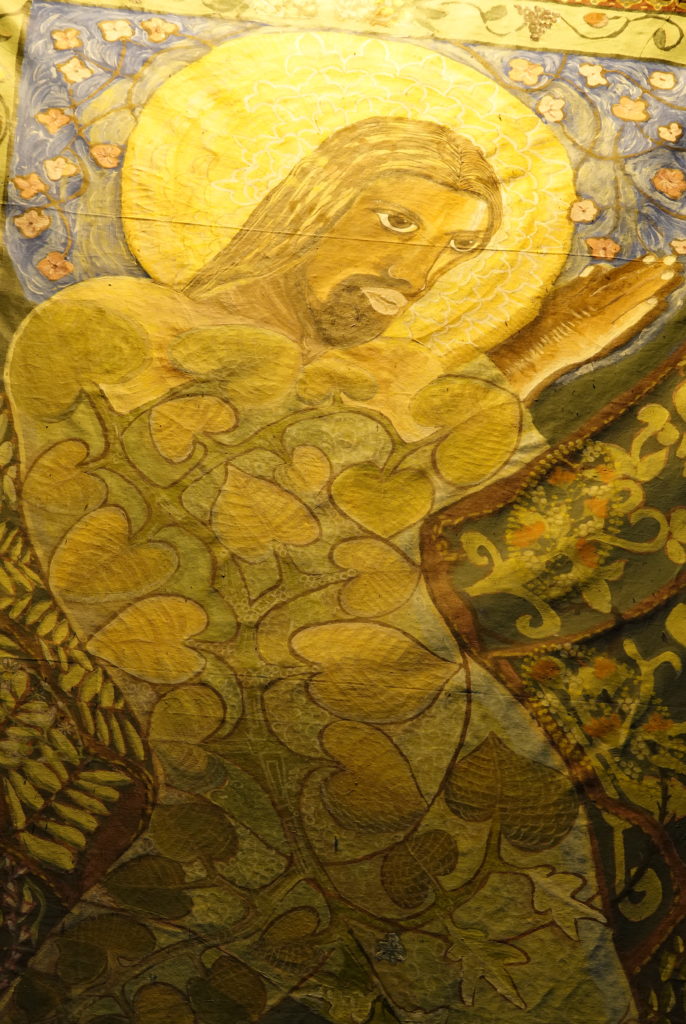
… the mug that wasn’t big enough for communion…
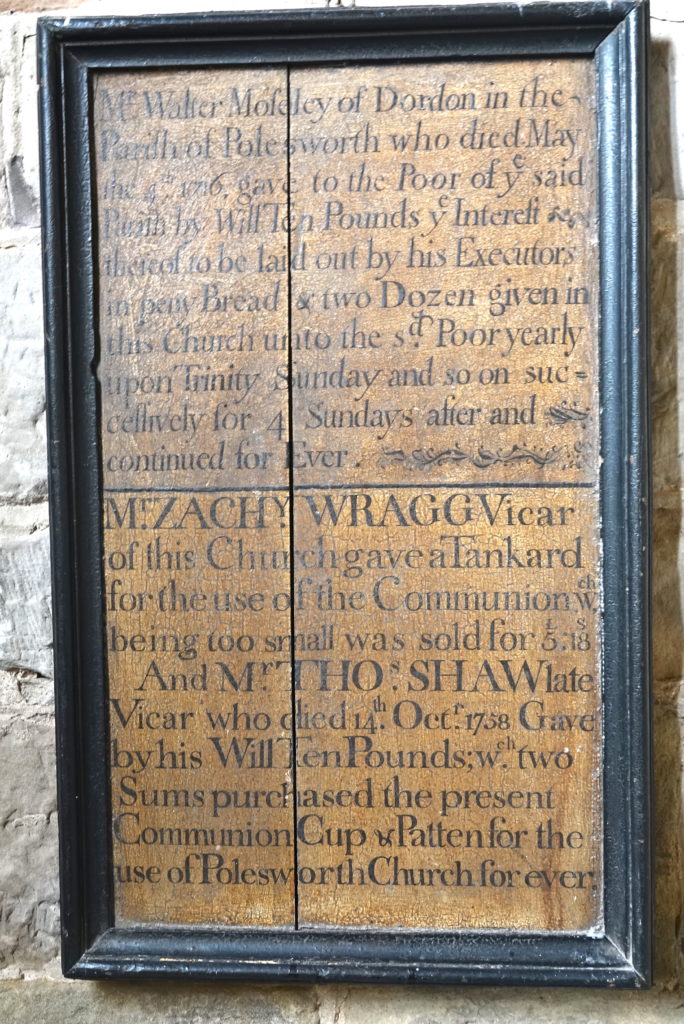
… but which sold for £5 18s, the map of Africa…

… mirror woman…
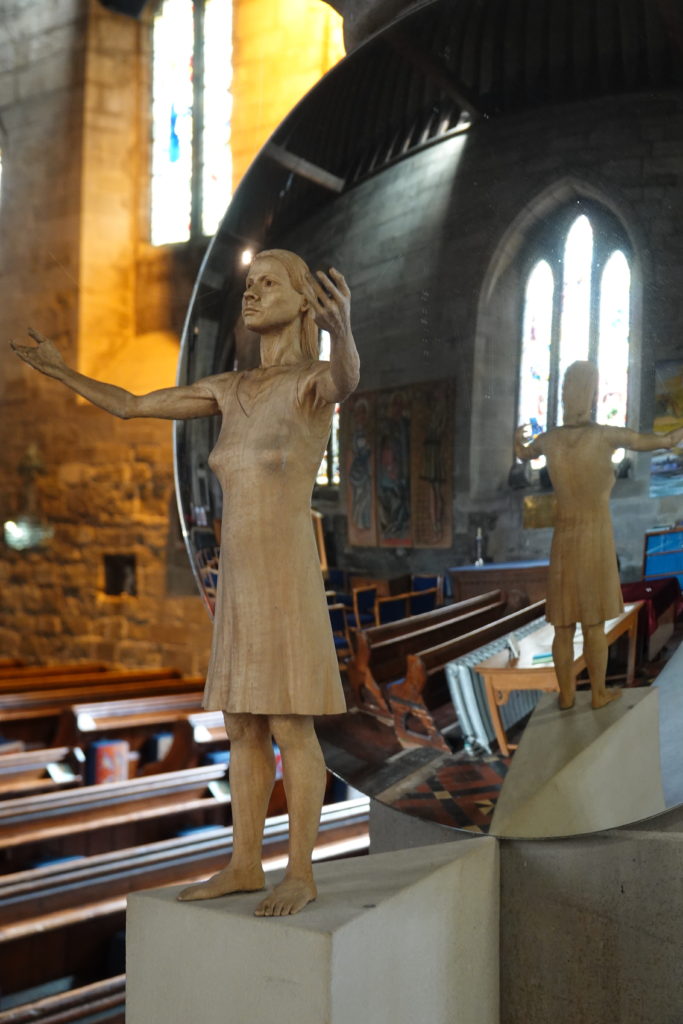
… the tombs of the faceless lady…
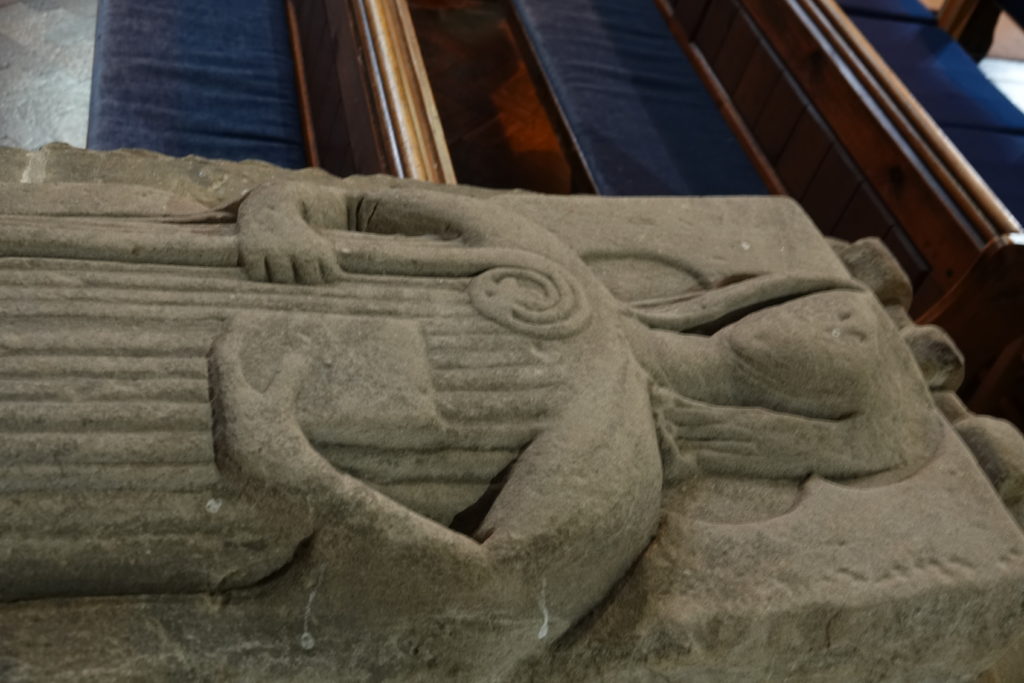
… and the lady with the Bose headphones.

We got chatting to the organist and her husband, a retired vicar. They told us about the being missionaries to the eskimos in arctic Canada, and showed us a green man hiding under a misericord.
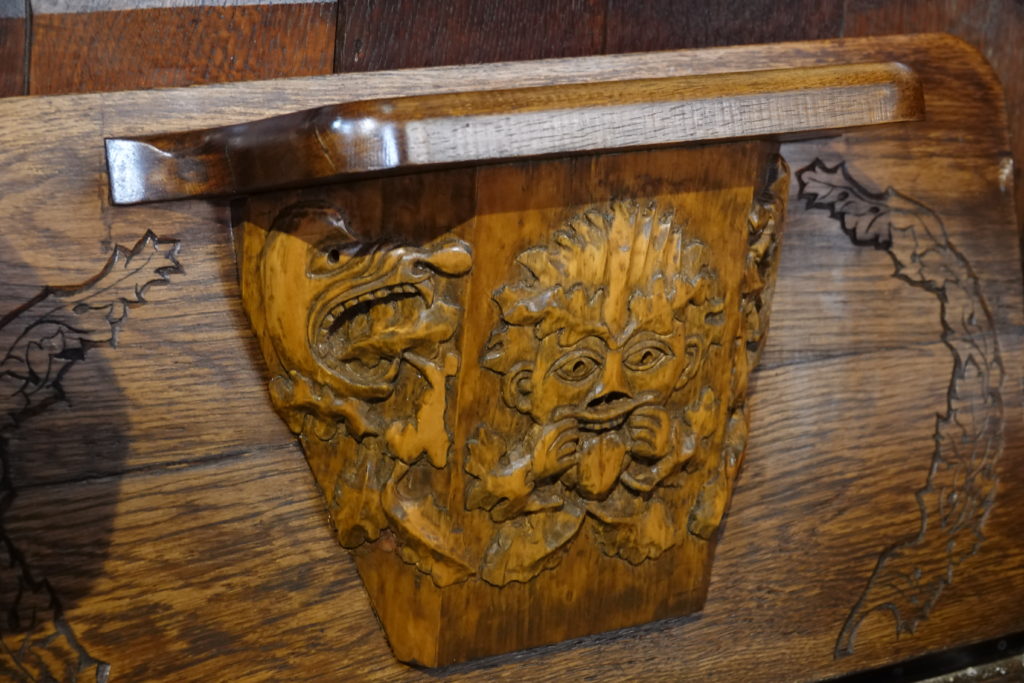
It’s modern, but put there to link with the church’s medieval past.
The garden and landscaping are lovely.

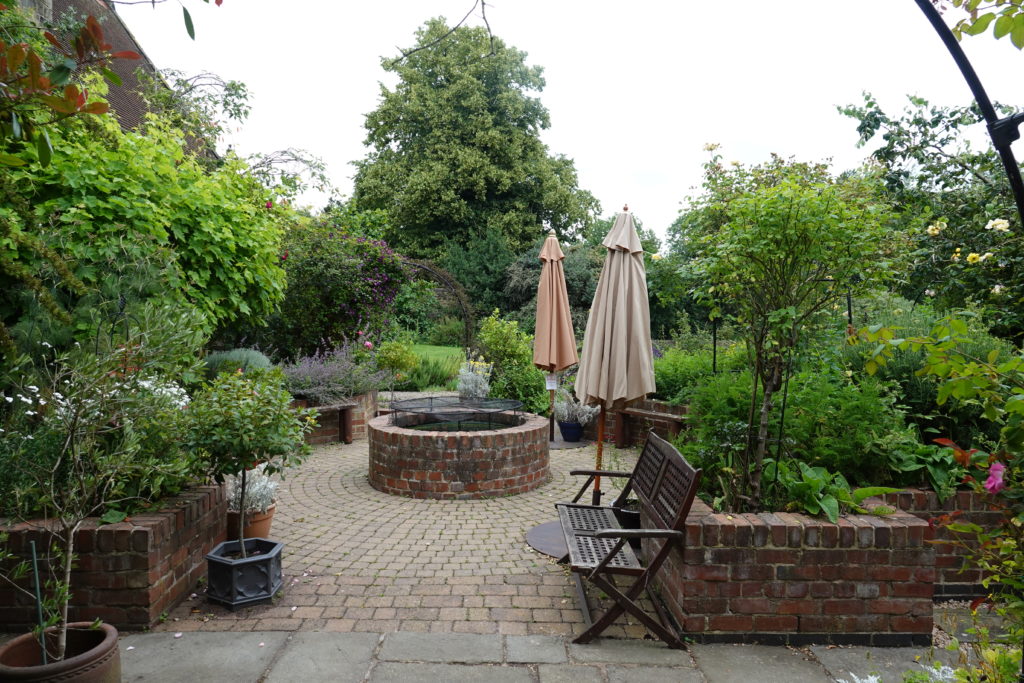

There’s a rumor that Shakespeare studied poetry in the Abbey gatehouse, which is only slightly more likely than Boudicca being buried in King’s Cross, but I’m sure it will look great when they list the place on AirBnB.